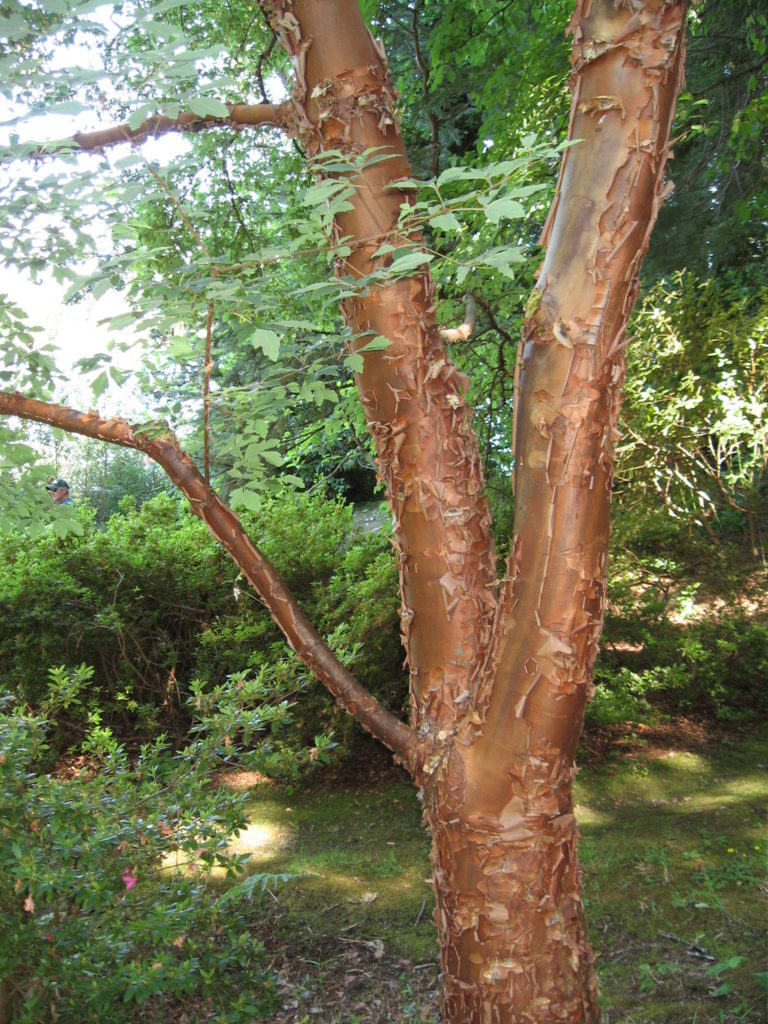
In the winter some gardeners get excited about tree bark, particularly if you own a paperbark maple (Acer griseum). This small 25-30 foot tall tree has an upright spreading branching habit. The cinnamon-colored bark flakes off naturally in thin strips or chips. Horticulturists call this “exfoliating”. The sturdy branches are not prone to breakage in stormy weather.
Fall leaf color is variable. The foliage of select cultivars and some seedling forma turn scarlet red. The dark green trifoliate leaves present a fine texture to a summer garden. Spring flowers are mostly inconspicuous. Two winged samara fruits (many call them “helicopters”) start dropping in early fall. Most seeds do not germinate and create a weedy mess.
Plant in full sun in northerly hardiness zones 5 and 6, and protect from the direct afternoon summer sun in southerly zone 7. Paperbark maple prospers in moist, well-drained, compost-rich, and moderately acidic soil, but does adapt to average soil that are adequately drained. Water a newly planted tree regularly over the first two years until fully established. Paperbark maple is generally slow growing, often less than 12 inches a year.
Paperbark maple provides shelter for birds and other wildlife. It has no serious disease and pest problems when properly sited. Its slow growing nature rarely asks for pruning. Maintain a year-round mulch that’s 2 to 3 inches deep to maintain adequate soil moisture.
Location, Location, Location. Truly, it is in the fall and winter seasons when paperbark maple shines. Set paperbark maple where its exquisite trunk’s bark is on show all winter long. Consider landscape lighting as the tree ages and becomes grander.
Most paperbark maples in the marketplace are seedling forms, and may vary widely in bark color. Two noted cultivars include:
• Gingerbread® (‘Ginzam’) with darker cinnamon-red bark and orange-red fall color;
• ‘Cinnamon Flake’( A. griseum and A. maximowiczianum) features darker green summer foliage and exfoliating bark of tiny chips.

 Posted in
Posted in 
